How to Grow Basil & Maximize Your Flavorful Harvest
Author: Jen Worst | Editor: Omar Alonso
Review & Research: Jen Worst & Chris Miller
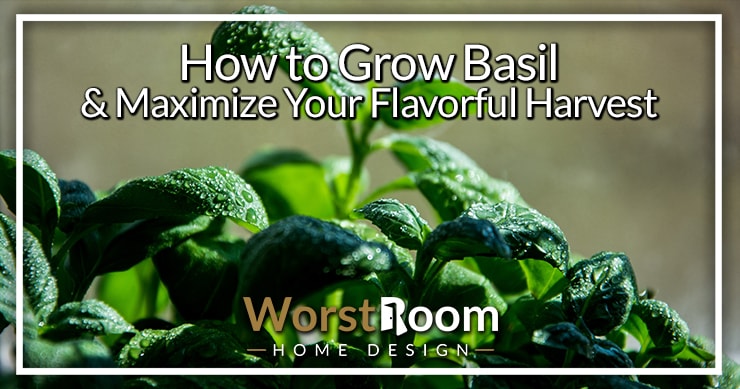
Knowing how to grow basil means you can open up an entire vista of flavor and options in your own cooking. Basil is a well known herb, an ingredient commonly found in Italian dishes. This green leafy herb is desired for its versatile flavor profile.
Basil loves the sunny season and thrives in warm soil. It has a varying leaf color ranging from green to dark purple. It's a member of the mint family, and you can see it in the wrinkled texture of its leaf.
Let's waste no time and jump right into the process of planting basil, whether in a pot or outdoors, and learn what it takes to keep it growing and thriving so you can harvest the maximum amount for your needs.
As a quick bit of trivia, it's been accepted that basil originated in India, but there are some records from 807 AD that suggest that basil was being used in the Hunan region of China around that time period. I'm sure we'll find even more ancient sources or even fossilized domesticated basil eventually.
When to Plant Basil
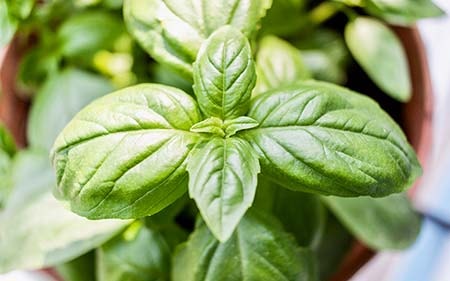
Before you get into the last spring frost, start planting your basil seeds indoors, at least six weeks before. Basil seeds love sunny and warm weather, so make sure that the temperature inside doesn't drop below 50 degrees Fahrenheit.
The ideal temperature for planting basil is when the temperature reaches 70 degrees Fahrenheit, though you can still achieve your goal with an even lower temperature.
The idea is to have your seeds germinated and forming a healthy sprout before moving them outdoors. You can start outdoors as well, but you'll face some challenges with fluctuating weather.
Basil Growing Conditions
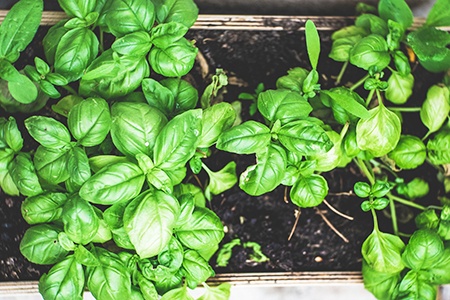
Basil plants should be growing in and/or transplanted to a place where they get full sun exposure for at least six to eight hours. The plants can grow fine in partial sun exposure, though that's not the most effective.
Make sure the soil you plant your basil in is well-drained but moist. Lots of people prefer to grow theirs in raised beds or a pot. A container is a fine option, but so is the ground. It's totally up to you.
Most people grow their basil plants for the leaves. If you're growing for the same reason, don't use any insecticide on the plant since you'll be ingesting it eventually. It would be best if you plant them away from road pollution, too. Great growing conditions are a key aspect of understanding how to grow basil.
How to Plant Basil
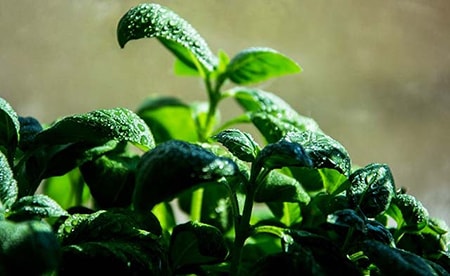
The process of planting basil is fairly easy. All you have to do is plant the seed one-fourth inches deep in the soil, let them grow till they reach a total height of 12 to 24 inches.
The seeds should be planted 10 to 12 inches away from each other. If your basil variety is large, consider planting individual plants at least 16 to 24 inches apart.
This is a great plant to grow in your garden, especially near other plant varieties prone to diseases as the aroma from this herb keeps insects away. It is known to repel ants, mosquitos, fleas, spiders, and ticks.
How Big Does Basil Grow?
Basil seeds germinate within 8 to 14 days. Around this time they will poke out from the soil, and within 2 to 3 weeks later you'll see your first set of mature leaves. Within 2 to 3 more weeks, your plant will reach around 6 inches in height. From there it will grow somewhere between 12 to 24 inches in total height.
How to Care for Basil
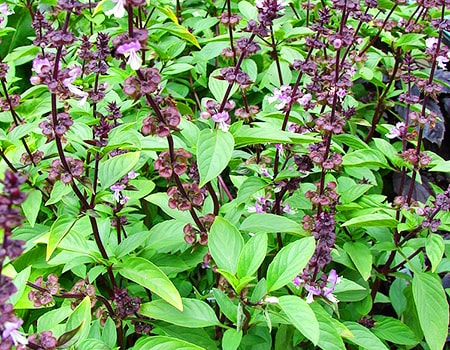
Basil plants love to be in warm soil that is moist. In dry weather, they require a lot of moisture, so water them appropriately.
If you plant in a hot region, secure the plant by using mulch around the areas. It also keeps away weed growth from the plant. This also serves to lock in moisture by keeping it from evaporating.
If you want your plants to have more branching, prune the first six leaves. This will encourage a faster growth of the leaves, proper branching, and a big harvest. Keep pruning the branches once they reach six to eight leaves.
For a big harvest, you should avoid flowering on your plants. To prevent flowering, you can pinch the middle shoot, or just remove it once it grows. This stops energy and nutrients from being routed to the flower instead of the leaves.
Basil doesn't like a cold weather, so if you see that the temperature in your region is going below 50 degrees and there is a possibility of frost, harvest the Basil. The cold weather will damage and kill the plant.
How to Harvest Basil
You can harvest the leaves from your basil plant once they reach the height of 6 to 8 inches. You'll also see that your plant will start growing more leaves once the temperature gets 80 degrees Fahrenheit.
We suggest harvesting in the early morning for juicy leaves. It'll be best if you keep collecting the leaves because this encourages more leafing. The plants will continue to thrive if you harvest their leaves properly, and you can get about four to six cups of leaves from 12 plants.
Storing Basil

It's recommended to regularly harvest the leaves from the basil plant to keep it growing. If you want to collect a lot of leaves, there's no problem with that because you can store them well for later use.
Basil stores best when frozen. Freezing restores a lot of the flavor. Quickly freeze the leaves, chop them finely or in pieces, and then store them in zip-lock bags in the freezer.
You can also store basil leaves by dehydrating them, but the flavor is vastly reduced. You can place your herb in shady and ventilated places to dry them cheaply and without much work. To dry them properly, you can put them in the oven on the lowest heat or use a dehydrator.
Diseases Found in Basil
Basil is a safe plant, so you don't have to worry about many diseases. But all living organisms can get sick.
Some of the problems with Basil plants include powdery mildew, aphids, and several diseases that affect the roots, stem, or leaves due to fungus and bacteria.
Definitely inspect your herbs before storing them and later using them. You can spot all of these problems visually.
Basil Varieties
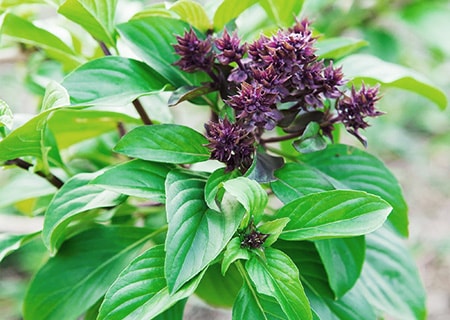
There are different types of basil varieties available. Some of the common types of basil include:
- Sweet Basil – these are sweeter
- Thai Basil – these have a licorice taste
- Purple Basil – these are less sweet
- Lemon Basil – these have a lemony taste
Here are some of the varieties that I personally enjoy and prefer:
- Cinnamon Basil – these give your dish a minty flavor
- Purple Basil – these are purple, which adds beautiful color to your dish
- Thai Basil – this adds licorice and sweet taste to the dish
Some people really don't like the licorice flavor at all, so ask yourself that question before you experiment too far. Don't learn how to grow basil just to end up with a flavor you don't like.
Basil for Your Ornamental Garden
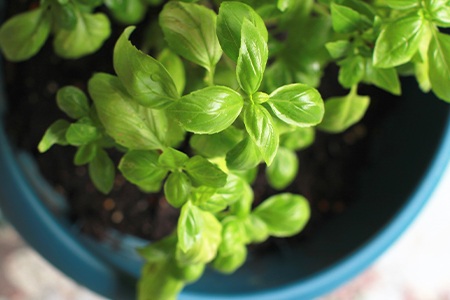
Basil is a beautiful addition to your ornamental garden, even if you don't intend on using it for culinary reasons. They're versatile plants that don't have to stay in the vegetable garden.
They look great in an ornamental garden on a patio, window sill, or more. You can plant them along the edge of walkways. Get creative!
Usually, basil plants are often grown beside tomato plants as they both help each other thrive. It's also convenient to harvest them at the same time, and they make great friends even on your plate. In tomato based dishes, basil is a constant companion.
Why You Should Grow Basil
It's known to be a healthy herb, the leaves are the main ingredients in different foods, but you can also eat the flowers.
Basil is not only used in food, but it is also used in several supplements and teas. It's because of all the health benefits it is said to provide.
It's rich in vitamins like vitamin K, and A, and it is also rich in minerals like manganese, iron, and calcium. However, in any dish, basil's use isn't in a large quantity, so apart from being a rich source of vitamin K, it doesn't provide a good amount of other vitamins or minerals.
Basil is a great herb that works well with a lot of ingredients. One of the most famous dishes made with it is pesto sauce. This is a creamy and green sauce used for different purposes, like making pasta, sandwiches, and dips.
Basil tastes excellent with other herbs and types of spices like garlic, parsley, oregano, pepper, rosemary, paprika, mustard, sage, etc. It's why it can suit any dish or cuisine well, no matter the other herbs used.
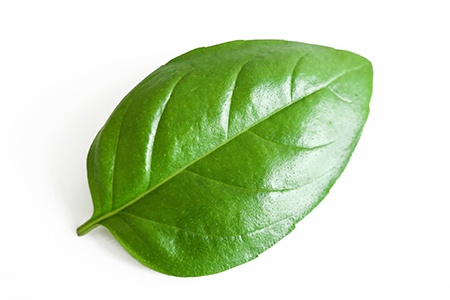
Most people identify it with Italian food and cooking, but it was found first in Africa and Asia, primarily in India. Basil is also famous for pizzas, salad toppings, soups, meat stuffing, tomato-based dishes, etc.
Growing basil is very easy, and most people find a lot of success in growing their crop. Keep the instructions above in mind before planting your basil plant.
That's How to Grow Basil!
Basil leaves taste best when fresh, and fresh produce is always a great addition to your dishes. This herb gives nearly any cuisine an excellent flavor profile.
Growing basil is not even space and time-consuming. Also, if you don't have a good spot in the garden, you can grow them on the sunny side of your window sill in a pot.
The leaves, especially sweet basil, is the most common variety grown in households. Other common varieties like lemon and Thai are also easily grown.
These plants grow well in summer, so before winter arrives, make sure to plant your seeds. And then harvest a lot of leaves as time goes on since storing it is also easy.
Learning how to grow basil is easy, and the harvest is frequent and in large quantities. By following our simple guide you can grow the plant easily in your garden.



